Modeling of Heat Transfer and Oscillating Flow in the Regenerator of a Pulse Tube Cryocooler Operating at 50 Hz
Abstract
:1. Introduction
2. Numerical Model and Simulations
2.1. Mesh Generation
2.2. Governing Equations
2.2.1. Assumptions
- Heat transfer and fluid flow is simplified to one dimension along the axial direction of the regenerator;
- The wall of the regenerator is adiabatic;
- Axial conduction in the solid matrix is neglected;
- Heat conduction between the wall and solid matrix in the regenerator is negligible;
- Density of the solid matrix is assumed to be constant and thermal expansion of the solid is neglected.
2.2.2. Mass, Momentum and Energy Conservation
2.3. Boundary Conditions
2.4. Correlations of Heat Transfer Coefficient and Friction Factor
2.5. Numerical Algorithm
3. Results and Discussion
3.1. Mesh Independence Verification
3.1.1. Verification of Time Step Independence
3.1.2. Size of Parcels Independent Verification
3.2. Model Validation
3.3. Simulation Results
4. Conclusions
Acknowledgments
Author Contributions
Conflicts of Interest
References
- Popescu, G.; Radcenco, V.; Gargalian, E.; Bala, P.R. A critical review of pulse tube cryogenerator research. Int. J. Refrig. 2001, 24, 230–237. [Google Scholar] [CrossRef]
- Richardson, R.N.; Evans, B.E. A review of pulse tube refrigeration. Int. J. Refrig. 1997, 20, 367–373. [Google Scholar] [CrossRef]
- Mahdi, R.A.; Mohammed, H.A.; Munisamy, K.M.; Saeid, N.H. Review of convection heat transfer and fluid flow in porous media with nanofluid. Renew. Sustain. Energy Rev. 2015, 41, 715–734. [Google Scholar] [CrossRef]
- Radebaugh, R.; Huang, Y.; O’Gallagher, A. Calculated Performance of Low-Porosity Regenerators at 4 K with He4 and He3. Cryocooler 2009, 15, 325–334. [Google Scholar]
- Radebaugh, R.; Huang, Y.; O’Gallagher, A.; Gary, J. Calculated regenerator performance at 4 k with helium-4 and helium-3. In Proceedings of the AIP Conference, Chattanooga, TN, USA, 16–20 July 2007. [Google Scholar]
- Radebaugh, R.; Huang, Y.; O’Gallagher, A.; Gary, J. Optimization Calculations for a 30 HZ, 4 K Regenerator with HELIUM-3 Working Fluid. In Proceedings of the AIP Conference, Tucson, AZ, USA, 28 June–2 July 2009. [Google Scholar]
- Radebaugh, R.; O’Gallagher, A.; Gary, J. Regenerator behavior at 4 K: Effect of volume and porosity. In Proceedings of the AIP Conference, Madison, WI, USA, 16–20 July 2001. [Google Scholar]
- Nield, D.A.; Kuznetsov, A.V.; Xiong, M. Effect of local thermal non-equilibrium on thermally developing forced convection in a porous medium. Int. J. Heat Mass Transf. 2002, 45, 4949–4955. [Google Scholar] [CrossRef]
- Pathak, M.G.; Ghiaasiaan, S.M. Convective heat transfer and thermal dispersion during laminar pulsating flow in porous media. Int. J. Therm. Sci. 2011, 50, 440–448. [Google Scholar] [CrossRef]
- Teamah, M.A.; El-Maghlany, W.M.; Dawood, M.M.K. Numerical simulation of laminar forced convection in horizontal pipe partially or completely filled with porous material. Int. J. Therm. Sci. 2011, 50, 1512–1522. [Google Scholar] [CrossRef]
- Li, Z.; Jiang, Y.; Gan, Z.; Qiu, L.; Chen, J. Influence of regenerator void volume on performance of a precooled 4 K stirling type pulse tube cryocooler. Cryogenics 2015, 70, 34–40. [Google Scholar] [CrossRef]
- Saat, F.M.; Jaworski, A.J. Friction Factor Correlation for Regenerator Working in a Travelling-Wave Thermoacoustic System. Appl. Sci. 2017, 7, 253. [Google Scholar] [CrossRef]
- Saat, F.M.; Jaworski, A.J. The Effect of Temperature Field on Low Amplitude Oscillatory Flow within a Parallel-Plate Heat Exchanger in a Standing Wave Thermoacoustic System. Appl. Sci. 2017, 7, 417. [Google Scholar] [CrossRef]
- Hsu, S.; Biwa, T. Measurement of Heat Flow Transmitted through a Stacked-Screen Regenerator of Thermoacoustic Engine. Appl. Sci. 2017, 7, 303. [Google Scholar] [CrossRef]
- Dai, Q.; Yang, L. LBM numerical study on oscillating flow and heat transfer in porous media. Appl. Therm. Eng. 2013, 54, 16–25. [Google Scholar] [CrossRef]
- Dai, Q.; Chen, H.; Yang, L. Numerical simulations of oscillating flow and heat transfer in porous media by lattice boltzmann method. J. Eng. Thermophys. 2012, 32, 1891–1898. [Google Scholar]
- Organ, A.J. Solution of the Classic Thermal Regenerator Problem. ARCHIVE Proc. Inst. Mech. Eng. Part C J. Mech. Eng. Sci. 1994, 208, 187–197. [Google Scholar] [CrossRef]
- Liang, J.; Ravex, A.; Rolland, P. Study on pulse tube refrigeration Part 1: Thermodynamic nonsymmetry effect. Cryogenics 1996, 36, 87–93. [Google Scholar] [CrossRef]
- Ataer, Ö.E. Numerical analysis of regenerators of free-piston type Stirling engines using Lagrangian formulation. Int. J. Refrig. 2002, 25, 640–652. [Google Scholar]
- Tang, Q.; Cai, J.; Liu, Y.; Chen, H. A Numerical Model of Regenerator Based on Lagrange Description. In Proceedings of the Interational Cryocooler Conference, Syracuse, NY, USA, 9–12 June 2014. [Google Scholar]
- Costa, S.C.; Barreno, I.; Tutar, M.; Esnaola, J.A.; Barrutia, H. The thermal non-equilibrium porous media modelling for CFD study of woven wire matrix of a Stirling regenerator. Energy Convers. Manag. 2015, 89, 473–483. [Google Scholar] [CrossRef]
- Miyabe, H.; Hamaguchi, K.; Takahashi, K. An approach to the design of Stirling engine regenerator matrix using packs of wire gauzes. In Proceedings of the 17th Intersociety Energy Conversion Engineering conference, Los Angeles, CA, USA, 8 August 1982. [Google Scholar]
- Nam, K.; Jeong, S. Novel flow analysis of regenerator under oscillating flow with pulsating pressure. Cryogenics 2005, 45, 368–379. [Google Scholar] [CrossRef]
- Nam, K.; Jeong, S. Measurement of cryogenic regenerator characteristics under oscillating flow and pulsating pressure. Cryogenics 2003, 43, 575–581. [Google Scholar] [CrossRef]
- Gary, J.; Radebaugh, R. An improved numerical model for calculation of regenerator performance (regen3.1). In Proceedings of the Fourth Interagency Meeting on Cryocoolers, Plymouth, MA, USA, 24 October 1990. [Google Scholar]
- Radebaugh, R.; Linenberger, D.; Voth, R.O. Methods for the measurement of regenerator ineffectiveness. NBS Spec. Publ. 1981, 607, 70–81. [Google Scholar]
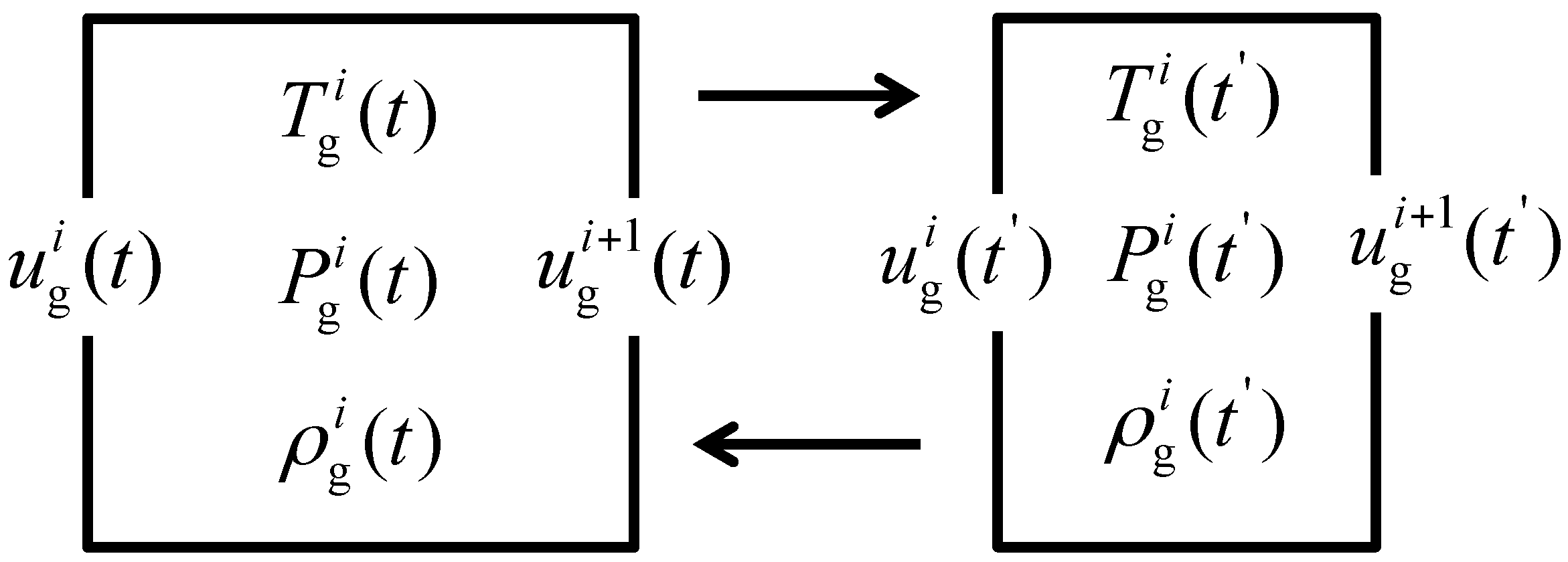
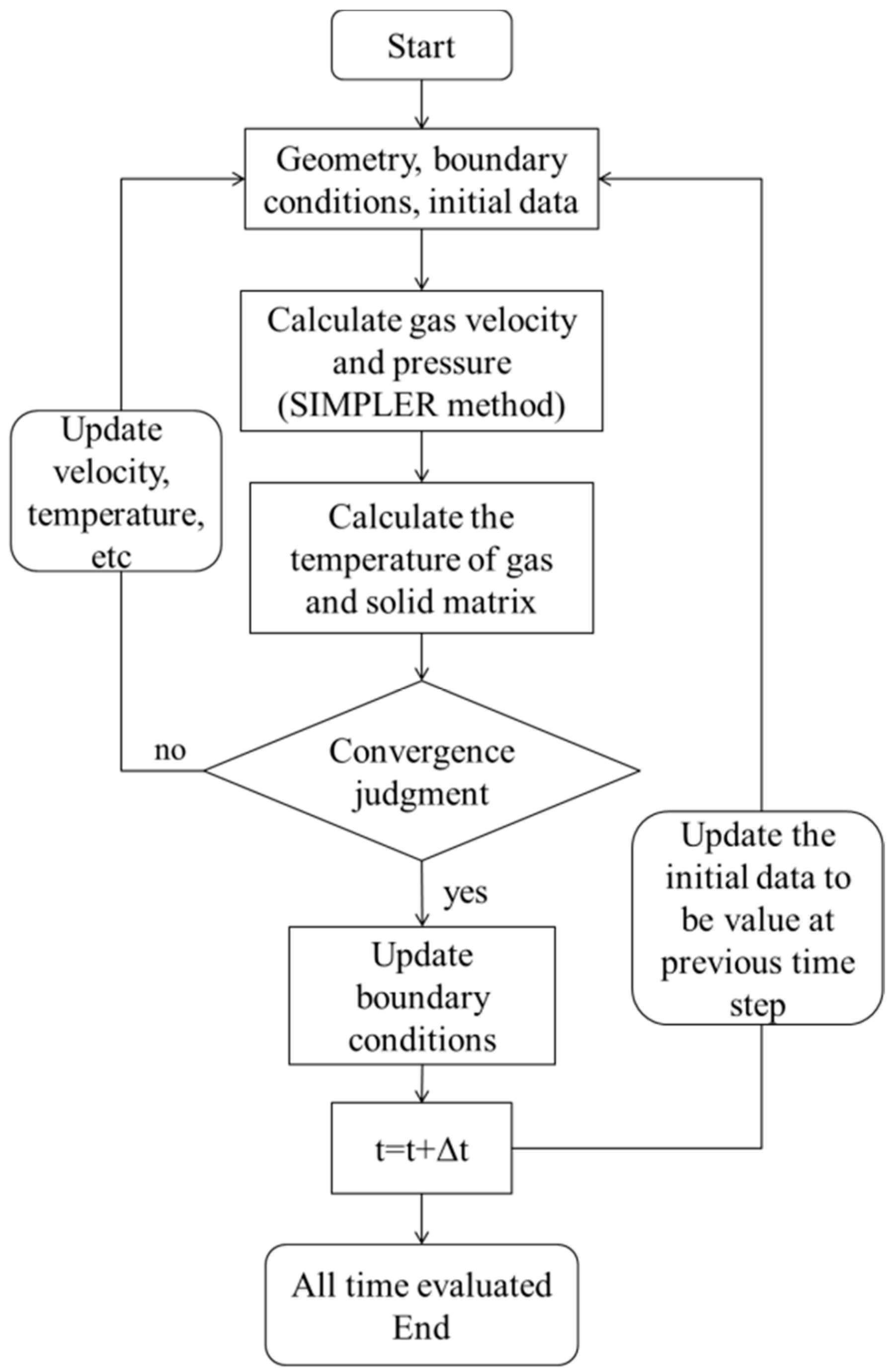
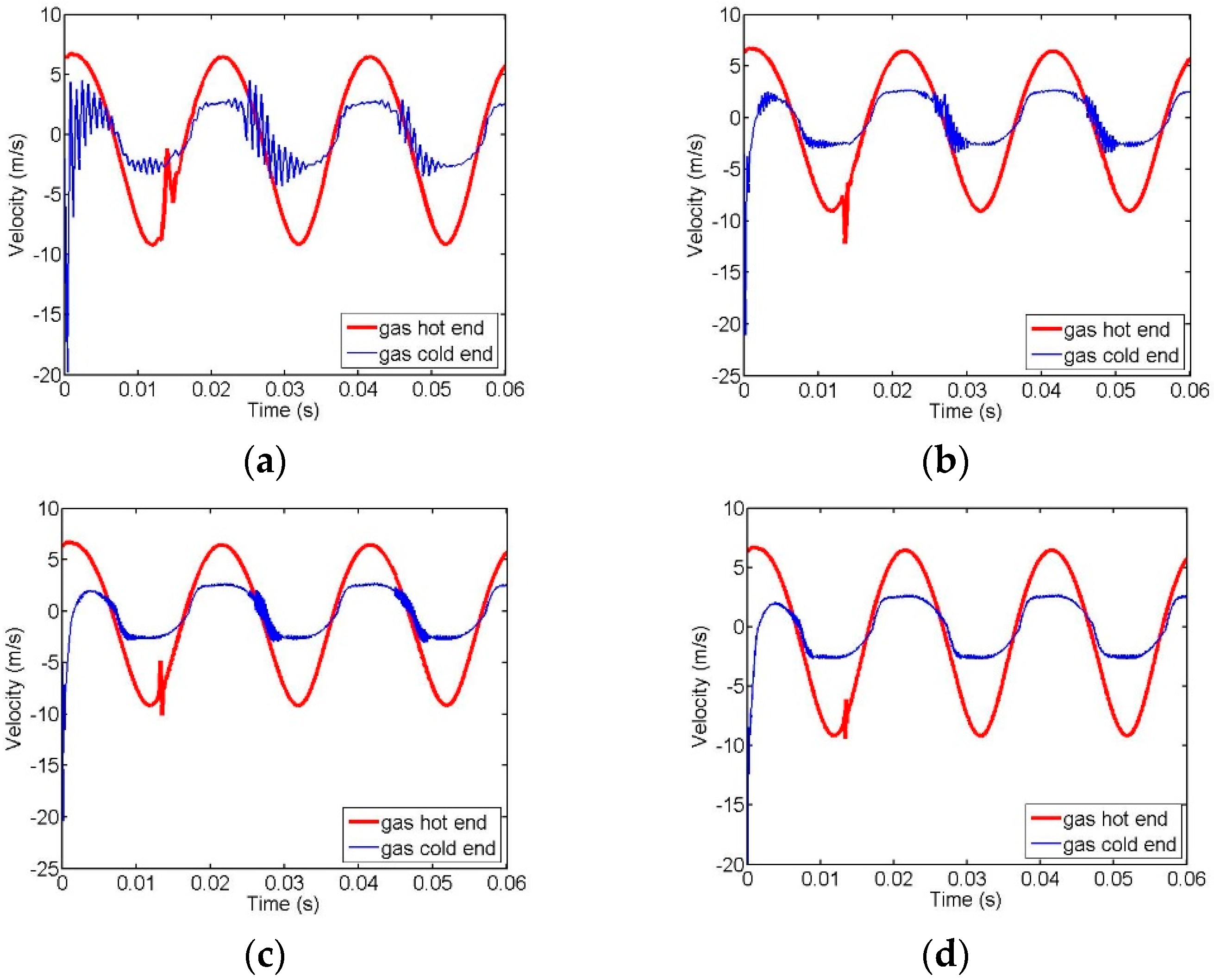
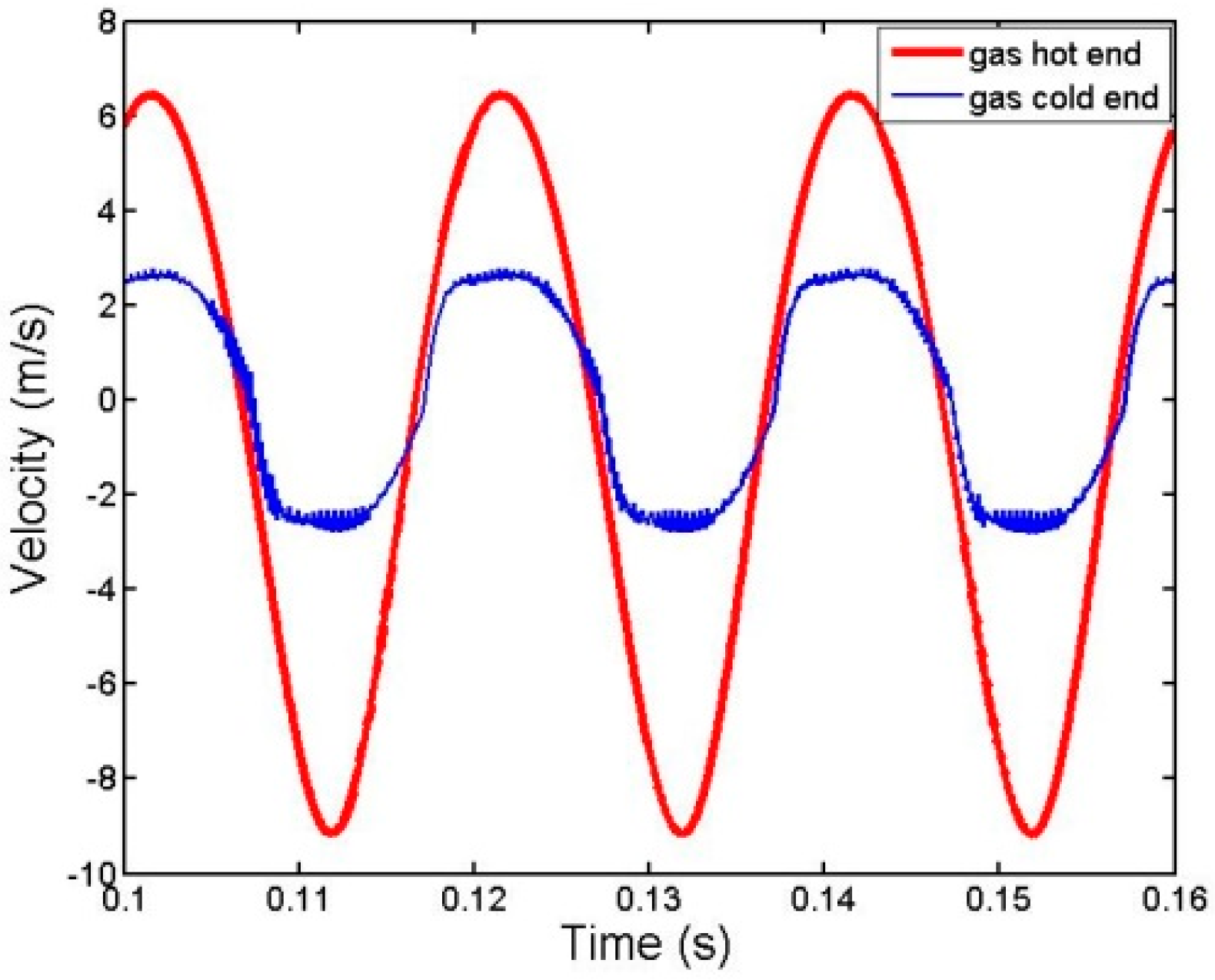

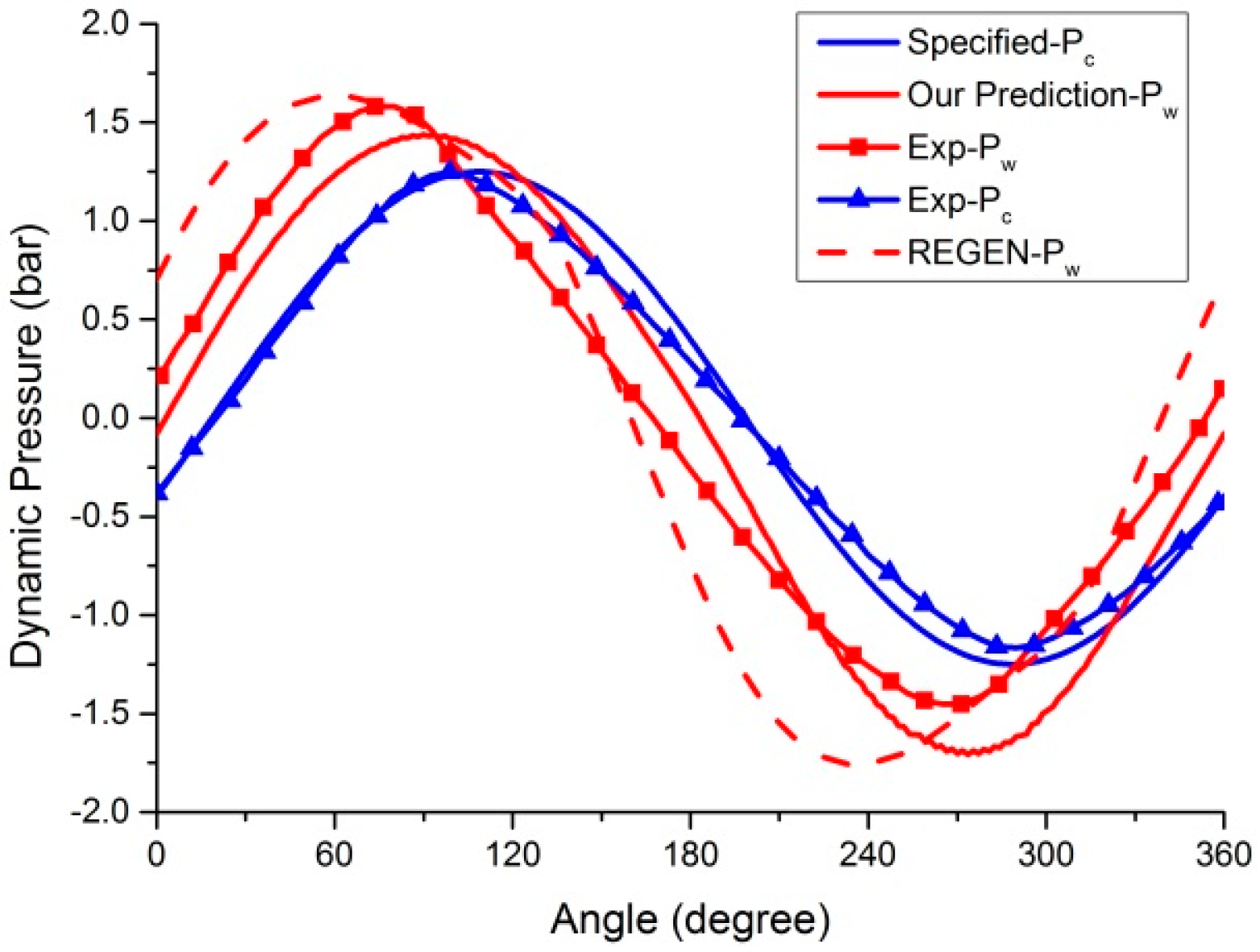
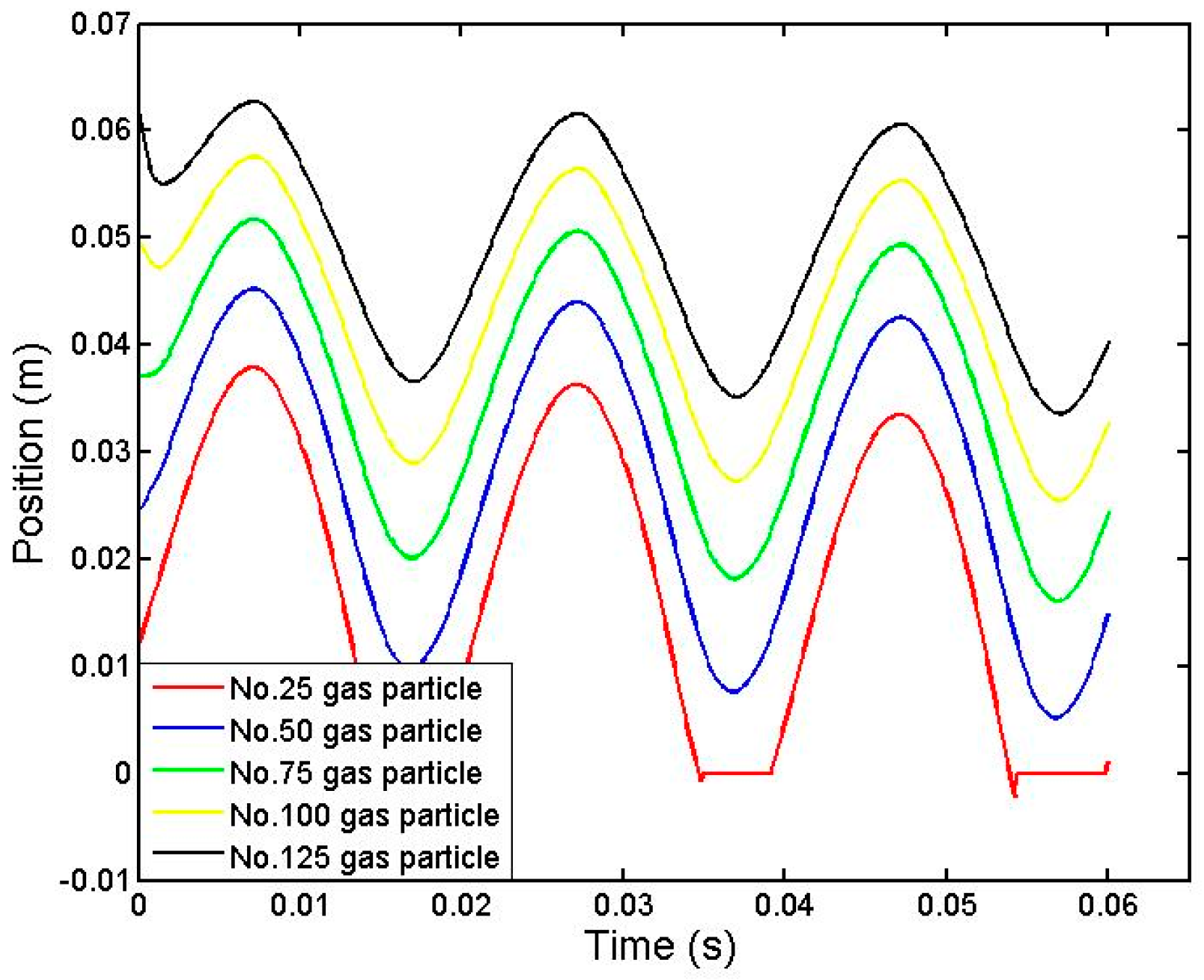
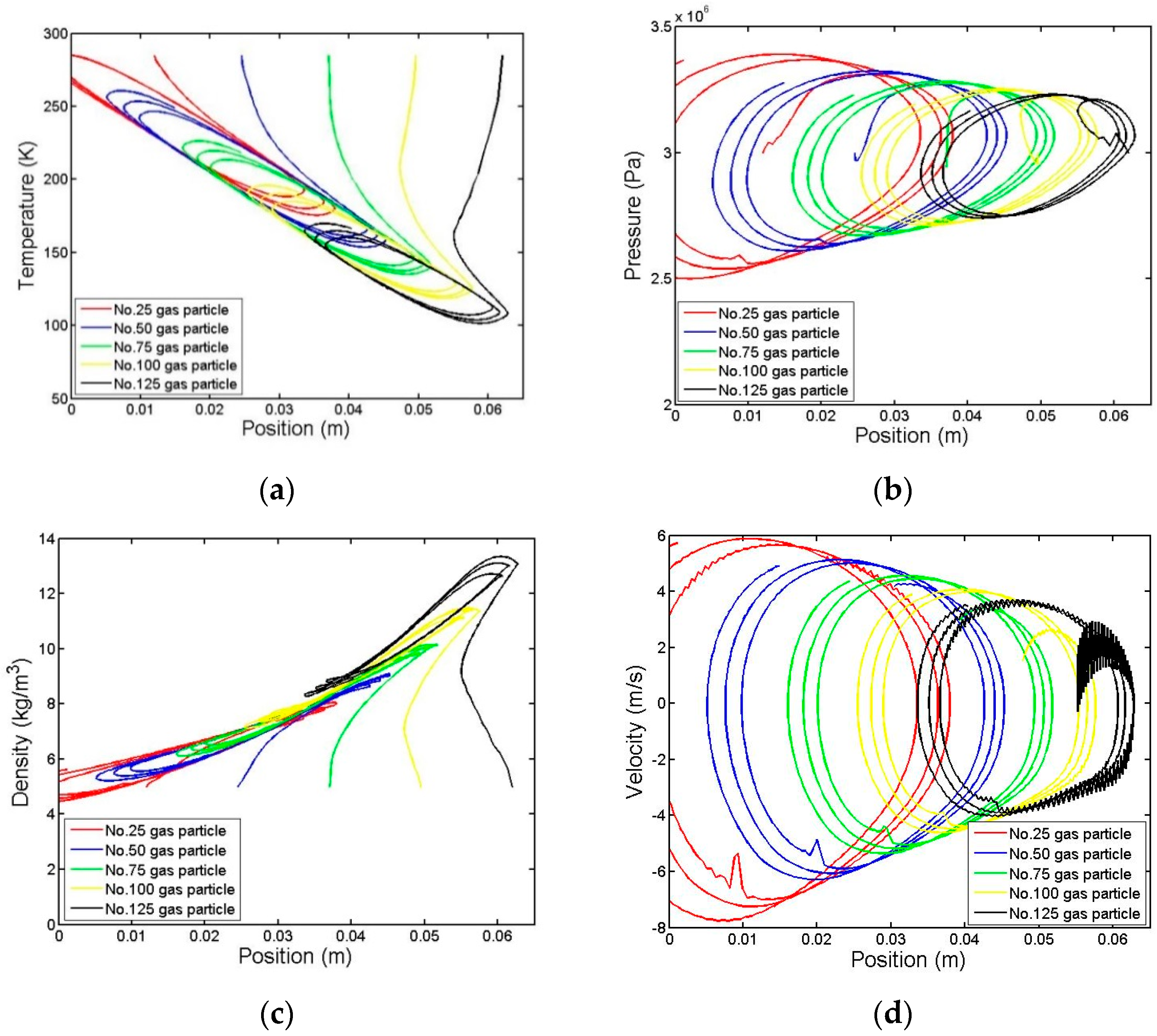
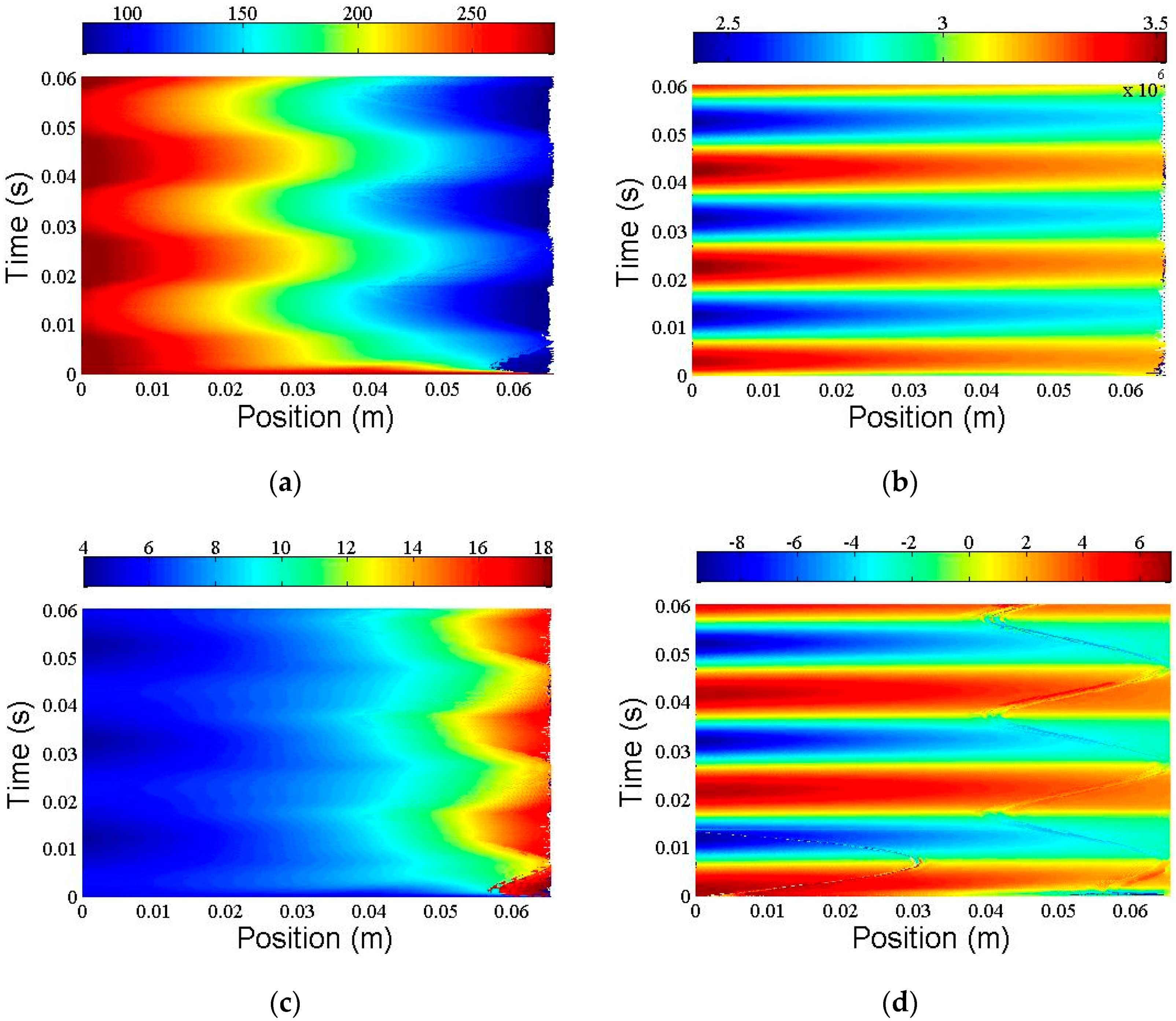
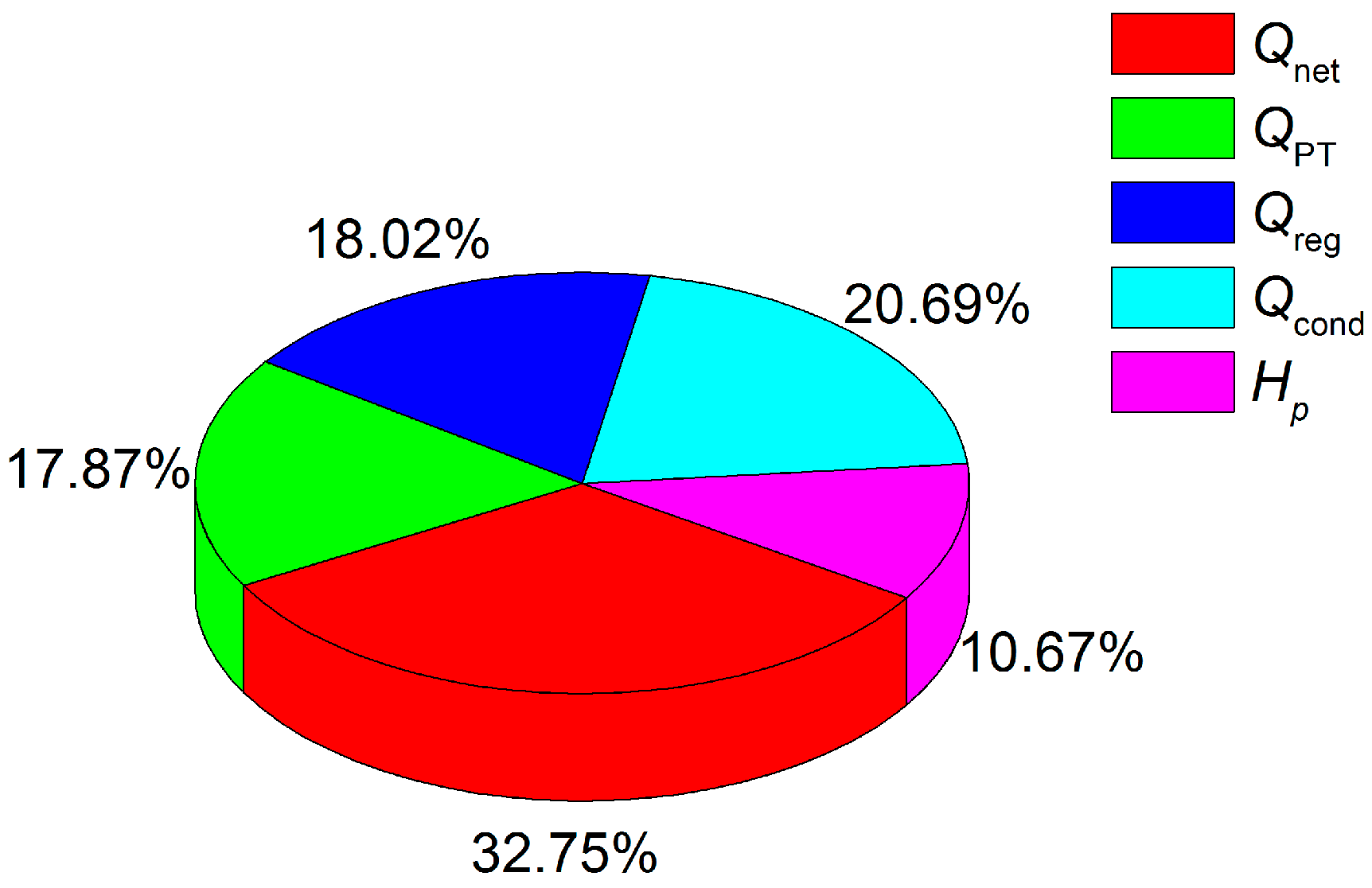
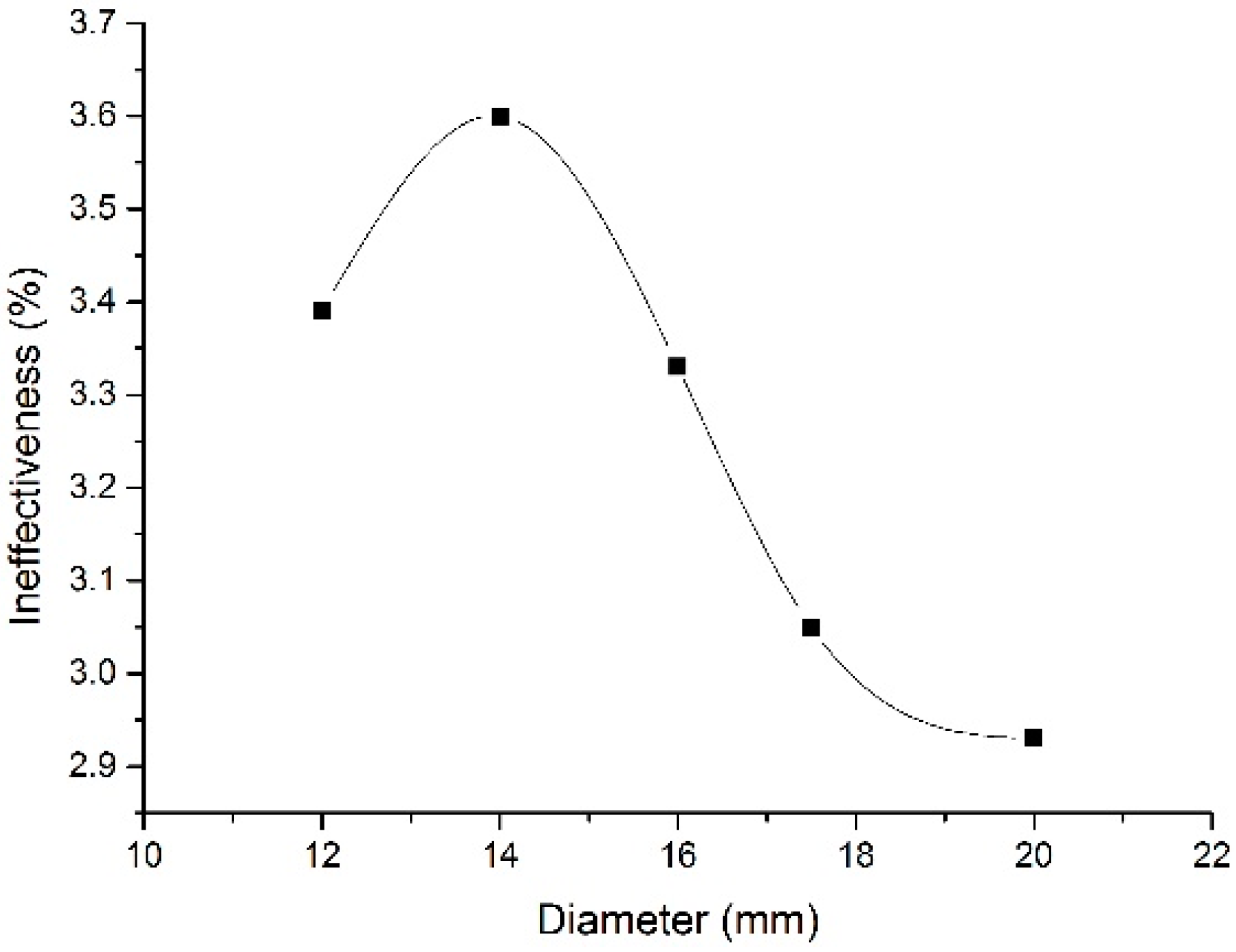

| Geometry | Parameters |
|---|---|
| length | 65 mm |
| inner diameter | 17.5 mm |
| porosity | 0.7 |
| mesh number | 400 |
| hydraulic diameter of mesh wire | 43 μm |
© 2017 by the authors. Licensee MDPI, Basel, Switzerland. This article is an open access article distributed under the terms and conditions of the Creative Commons Attribution (CC BY) license (http://creativecommons.org/licenses/by/4.0/).
Share and Cite
Liu, X.; Chen, C.; Huang, Q.; Wang, S.; Hou, Y.; Chen, L. Modeling of Heat Transfer and Oscillating Flow in the Regenerator of a Pulse Tube Cryocooler Operating at 50 Hz. Appl. Sci. 2017, 7, 553. https://doi.org/10.3390/app7060553
Liu X, Chen C, Huang Q, Wang S, Hou Y, Chen L. Modeling of Heat Transfer and Oscillating Flow in the Regenerator of a Pulse Tube Cryocooler Operating at 50 Hz. Applied Sciences. 2017; 7(6):553. https://doi.org/10.3390/app7060553
Chicago/Turabian StyleLiu, Xiufang, Chen Chen, Qian Huang, Shubei Wang, Yu Hou, and Liang Chen. 2017. "Modeling of Heat Transfer and Oscillating Flow in the Regenerator of a Pulse Tube Cryocooler Operating at 50 Hz" Applied Sciences 7, no. 6: 553. https://doi.org/10.3390/app7060553





